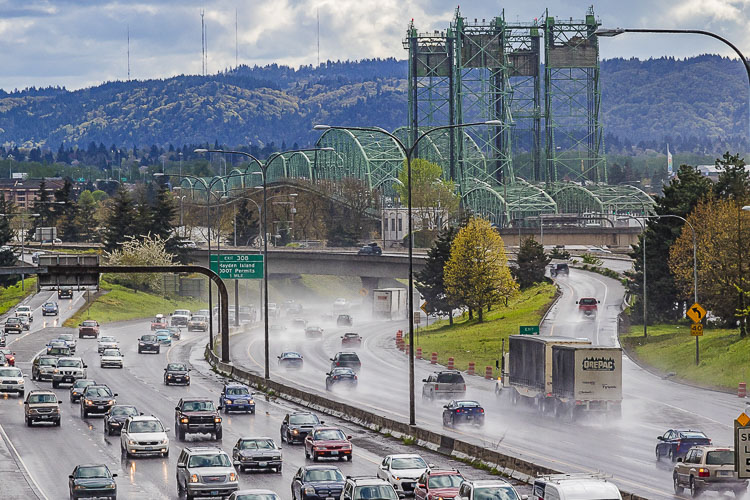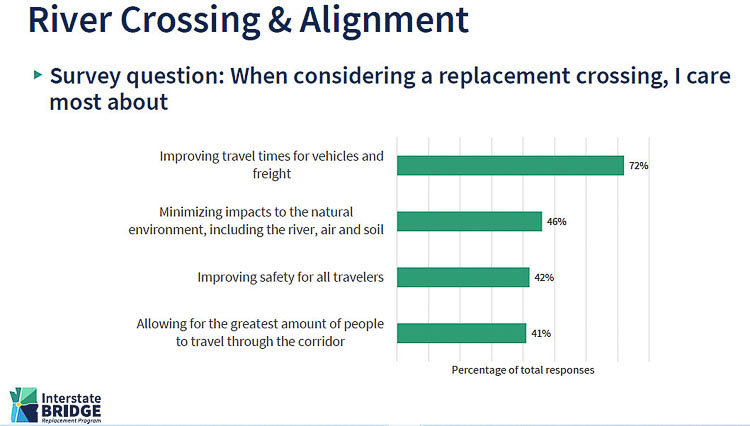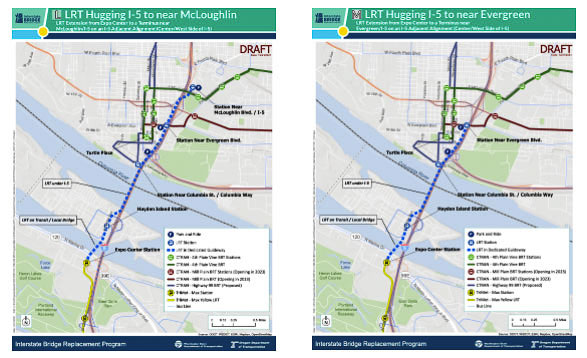Sen. Annette Cleveland’s top priority about desire to get $1.2 billion in state funds for project
Sen. Annette Cleveland (Democrat, 49th District) believes it’s time to “Move Ahead Washington.” She has doggedly pushed to resurrect the failed Columbia River Crossing (CRC) since being elected to the state senate in 2013. Cleveland notes she has successfully pushed to allocate $1 billion in the largest transportation package in state history. The package has increased to $17 billion in taxes and projects, and is now before the Washington State Legislature. News reports indicate $200 million was removed from the bridge project at the last minute.
The version of the package that passed the House removed $2 billion in funding from a fuel export tax. Oregon, Idaho, and Alaska strongly objected to the 6 cent per gallon tax that might have cost their citizens $75 per year. The senate has apparently agreed to remove the fuel export tax, while adding additional cash from the general fund and the public works accounts..
With just one day remaining in the current session, negotiations are moving at a fast pace in an effort to close a deal on the Democrat proposal. Republicans have been left entirely out of the negotiations.
“There was absolutely no input from my side of the aisle, and, in my opinion, that shortchanges the citizens of the state of Washington,” said Sen. Curtis King, (Republican, 14th District).

House Transportation Chair Jake Fey (Democrat, 27th District) sits with Cleveland on the Bi-state Bridge Committee of 16 legislators providing oversight to the Interstate Bridge Replacement (IBR) program. Fey reversed course and pulled the fuel export tax, in favor of taking money from the Public Works Assistance Account.
News reports indicate negotiators have now landed on a combination of sources to fill the gap. An additional $57 million a year for the next 15 years will come from the state’s operating budget, said the chair of the Senate Transportation Committee, Sen. Marko Liias (Democrat, 21st District). That’s on top of $2 billion already agreed to in previous transportation proposals.
The package will also count on $855 million taken from the state’s public works account, which collects taxes to finance low-interest loans to local governments. The House originally proposed diverting $100 million annually away from the account. Public Works Board chair Kathryn Gardow spoke out strongly against doing so, saying it would throttle an important source of financing for local governments.
Liias said they also intend to increase the fee collected to check that a vehicle was not stolen from $15 to $50 for the next four years and then up to $75 after that. They’ve also revised upward their estimate of how much will be available in federal funding.
The senate briefly considered diverting tax revenue away from the state’s Model Toxic Controls Act account, but have now shelved that idea.
Cleveland’s efforts
“Replacing the Interstate 5 Bridge spanning the Columbia River between Vancouver and Portland has been my priority since entering the state Senate in 2013,” Cleveland said. She mentioned that the two states had spent 15 years planning for the CRC.
“That project would have replaced our long-outmoded I-5 spans with a modern bridge, improving safety, reducing the number of hours of traffic congestion per day and vastly improving pedestrian, bike and transit options that help reduce climate impacts,” she said.
Cleveland and other elected officials paint a picture of a bridge about to collapse. Yet both ODOT and WSDOT say the two bridge structures are safe.
“If our transportation systems aren’t efficient, aren’t safe, then those businesses at the port will go elsewhere,” Cleveland said in a recent IBR video. “And when that happens, they take the jobs with them.”
Most citizens would separate the “efficient and safe” aspects of the project. Efficient means saving time. For freight haulers, time especially means money. Economist Joe Cortright recently shared that the project doesn’t add up for truckers, with $18 tolls from the previous CRC proposal.

“It’s important for us to get this up and running in a way that’s safe and running in a way that is going to be modernistic enough to take care of our needs in the future,” said Oregon Rep. Susan McLain in the video clip.
So how much time will the IBR save? That is the question Oregon Sen. Lew Frederick asked last fall. Johnson’s response indicated at best, “not much.” In the failed CRC, the $3.5 billion expenditure delivered only a one minute improvement in the morning southbound commute.
The IBR recently shared survey data indicating 78 percent of Washington residents want reduced travel times. Overall for Oregon and Washington, it was 72 percent. That number has been repeated in every survey the IBR has taken. People’s number one priority is saving time and reducing traffic congestion.
Johnson has shared that the replacement bridge will have three through lanes, exactly what the current two bridge structures have. He hopes the addition of “auxiliary lanes” will smooth out merging and weaving, and eliminate some of the congestion associated with the bridge.
Cleveland is proud of her effort to revive the project. She highlights a “collaborative process” where “all voices are heard.”
“At every step of the way we insisted on an open, inclusive process to develop a plan with strong enough consensus to withstand 11th-hour opposition,” she said. “No one wants to see millions of tax dollars invested in a bridge project go down the drain again.”
Yet the project won’t improve travel times, indicating those leading the current effort are ignoring area residents’ top priority.
Many Clark County citizens felt ignored in the previous process. Almost nobody wanted to pay tolls, which former Vancouver Mayor Tim Leavitt highlighted as costing $8 each way. Furthermore, people objected to the fact that the project included an extension of Portland’s light rail, which caused significant concerns among many citizens.
The current effort is pushing tolling, again ignoring the input of so many citizens on both sides of the river. Clark County residents have repeatedly said “no” to light rail transit. Cleveland says “all voices are heard,” yet the IBR team is pushing more “high capacity transit” options that use Portland’s MAX light rail, than merely using Bus Rapid Transit (BRT).

Recently the IBR team added new light rail options to the discussion. One option had MAX traveling from the Expo Center in Portland to a terminus near McLoughlin Blvd. in Vancouver. The other option ran from the Expo Center to a terminus near Evergreen Blvd. in Vancouver. This brings light rail options in their plan to six, with four BRT options, a Bus on Shoulder (BOS) and a “no build” option.
Cleveland said nothing about tolling, nor about what is or isn’t acceptable in terms of saving time or reducing traffic congestion. She merely noted people are frustrated being stuck in traffic.
“Rebuilding trust has been an important aspect of the work to move forward,” she said about the relationship with Oregon. Will the current effort and process rebuild trust with the citizens of Southwest Washington?
Willamette Week labeled the failed CRC “a bridge too false.”




